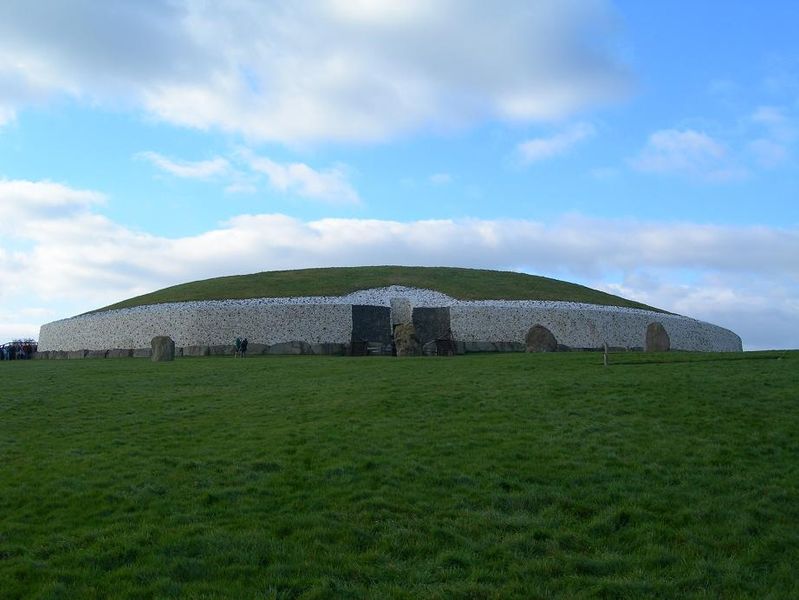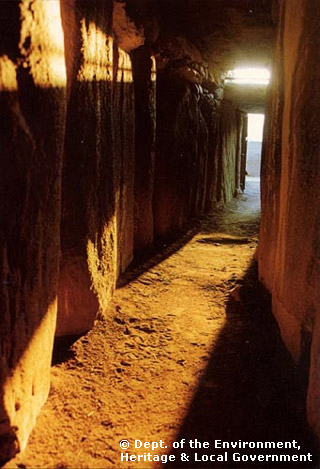Solstice@Newgrange
This post is part of a blog hop organized by the Helen Hollick (), the theme is “shedding light in the darkness”, an appropriate one for the shortest day of the year.
21st December is, of course, the shortest day of the year (for those in the northern hemisphere). John Dunne memorably described it as “the year’s midnight”. At this nadir of the calendar whatever life remains in the natural world seems to be withered and frozen to an almost dead stop. The wheel of time has slowed and rattled nearly to a complete stop. Dunne captured it brilliantly in his “Nocturnal upon St. Lucy’s Day”:
'… it is the day's, Lucy's, who scarce seven hours herself unmasks;
The sun is spent, and now his flasks/Send forth light squibs, no constant rays;
The world's whole sap is sunk;The general balm th' hydroptic earth hath drunk,
Whither, as to the bed's feet, life is shrunk,
However, like all nadirs, this is a turning point. From here on the days begin to lengthen, the sun gets warmer and life begins to slowly but surely return to the world. As the theme of this blog hop goes, light will be shed in the darkness.
Clearly our ancestors felt this too, and nowhere is this more plain than in the megalithic monument in Ireland now called Newgrange.
Older than both Stonehenge and the Egyptian pyramids, this impressive mound sits on a curve in the Boyne, a river still sacred to some in Ireland. The name Newgrange isn’t exactly new - it dates from the 1370s - however some still refer to the place by an older name, “Brú na Bóinne”, and this is the title given to the World Heritage Site that covers Newgrange and the complex of other megalithic tombs and stone circles in the area. The title “Brú na Bóinne” comes from medieval Irish tales written down three centuries earlier, but it’s sobering to think that that even then the place was four thousand years old and whatever the original name for the place was, or what its purpose was, has long been lost in the mists of time.
Some clues remain, however. Tantalizing hints that suggest meaning but could just be red herrings left by history to prompt us to jump to incorrect conclusions, or at least postualte theories that can never really be substantiated. In archeology the term “ritual site” seems to have become a common synonym for “we have no idea what went on here” and Newgrange fits into that category. Theories abound: Possibly a tomb, possibly a temple, maybe even a place were our ancestors took hallucinogenic drugs (the last one prompted by the unique spiraling rock art there). One thing is clear and that is that for some reason, the Winter Solstice was important to the people who built Newgrange.
On the shortest day of the year, the rising sun shines directly along the long passage into the central chamber at the heart of the mound. The sun enters the passage through a special opening, directly above the main entrance.
This can’t be a co-incidence, as another tomb nearby in Dowth also captures the sunlight on the soltice day. Clearly this event had enough significance to our distant ancestors to prompt them to take on such feats of engineering.
Its long been an ambition of mine to be there and witness this phenomenon in person. Mum and Dad took us to Newgrange in the late 1970s and we always talked about “some day” making the pre-dawn trip but somehow the solstice always came and went without us getting round to it. Unfortunately its fame and popularity is such now that the only chance to get in is by entering a lottery. You can enter it yourself if you feel lucky: http://www.newgrange.com/solstice-lottery.htm
However, I’m excited to find that the event is streamed live on the internet: http://www.newgrange.com/webcast.htm, a sort of Soltice@Newgrange.com so maybe I will make it, at least virtually, after all.
Some people may baulk at the idea of modern technology invading even this most ancient of religious sites but to me it seems appropriate. The construction of Newgrange must have taken the most advanced technological capabilities available at the time: The calculations required to make sure the passage meets the sun on the Solstice alone are impressive and some folk at the time perhaps regarded it as sufficiently advanced to be somehow magic. It is a wonder of architecture, mathematics and engineering as sophisticated for it’s time as the Internet itself is to ours. Why shouldn’t the two come together?
I will finish with a piece of appropriate music. I thought maybe some sort of piece by Enya but in the end, what could be more appropriate for the Winter Solstice than a bit of Jethro Tull?
You can find the rest of the participants on the "Light in the darkness" blog hop here:
- Helen Hollick : A little light relief concerning those dark reviews! Plus a Giveaway Prize
- Prue Batten : Casting Light....
- Alison Morton Shedding light on the Roman dusk
- Anna Belfrage Let there be light!
- Beth Elliott : Steering by the Stars: Stratford Canning in Constantinople, 1810 -12
- Melanie Spiller : Lux Aeterna, the chant of eternal light
- Janet Reedman The Winter Solstice Monuments
- Petrea Burchard : Darkness - how did people of the past cope with the dark?
- Richard Denning : The Darkest Years of the Dark Ages: what do we really know? Plus a Giveaway Prize!
- Pauline Barclay Shedding Light on a Traditional Pie
- David Ebsworth : Propaganda in the Spanish Civil War
- David Pilling : Greek Fire Plus a Giveaway Prize!
- Debbie Young Fear of the Dark
- Derek Birks Lies, Damned Lies and … Chronicles
- Mark Patton : Casting Light on Saturnalia
- Tim Hodkinson : Solstice@Newgrange
- Wendy Percival : Ancestors in the Spotlight
- Judy Ridgley : Santa and his elves Plus a Giveaway Prize
- Suzanne McLeod : The Dark of the Moon
- Katherine Bone : Admiral Nelson, A Light in Dark Times.
- Christina Courtenay : link and title to be announced
- Edward James : The secret life of Christopher Columbus; Which Way to Paradise?
- Janis Pegrum Smith : Into The Light - A Short Story
- Julian Stockwin : Ghost Ships - Plus a Giveaway Present
- Manda Scott : Dark into Light - Mithras, and the older gods
- Pat Bracewell Anglo-Saxon Art: Splendor in the Dark
- Lucienne Boyce We will have a fire - 18th Century protests against enclosure
- Nicole Evelina What Lurks Beneath Glastonbury Abbey?
- Sky Purington : The Scotch-Irish Impact on American Holidays.
- Stuart MacAllister (Sir Read A Lot) : The Darkness of Depression



Comments